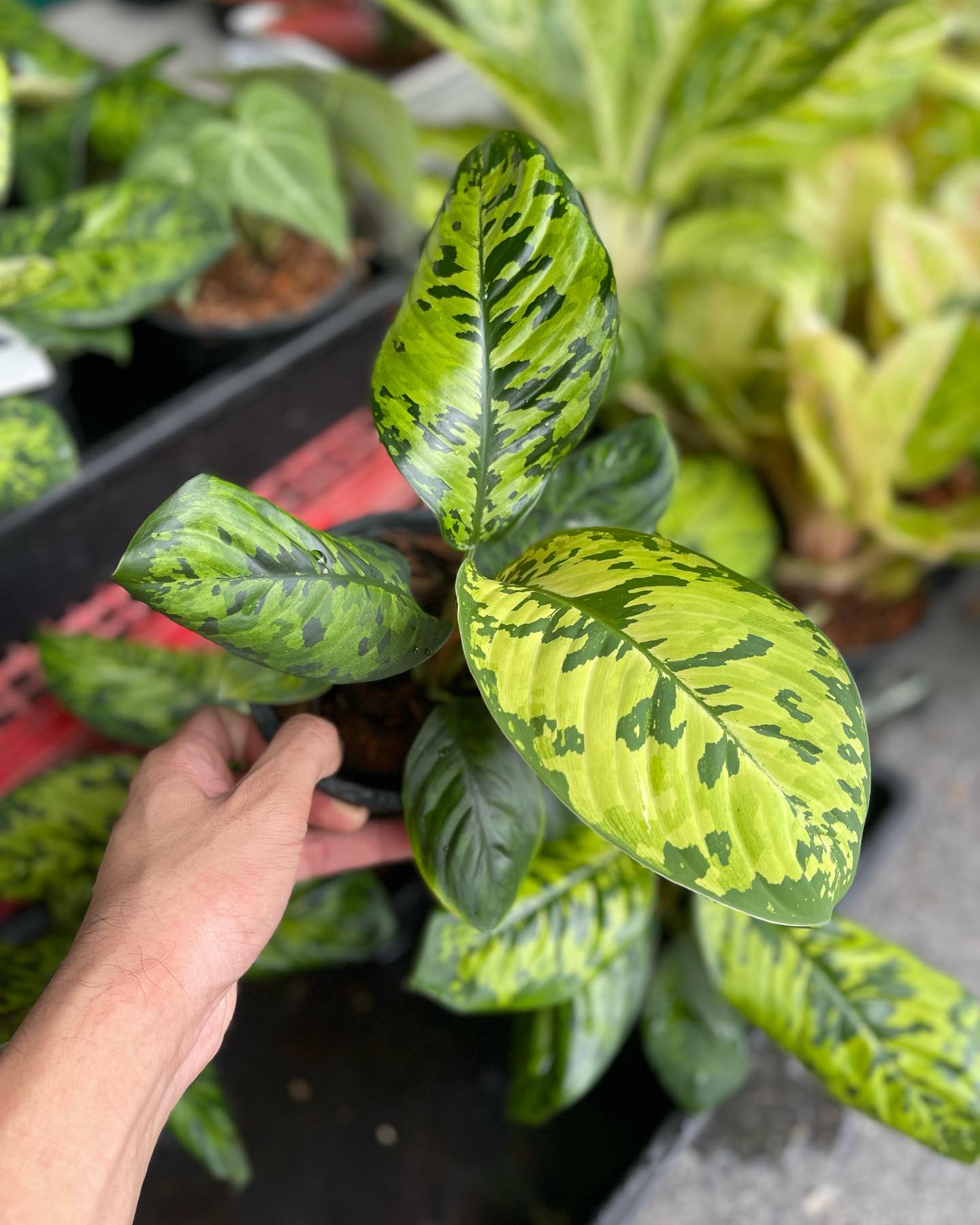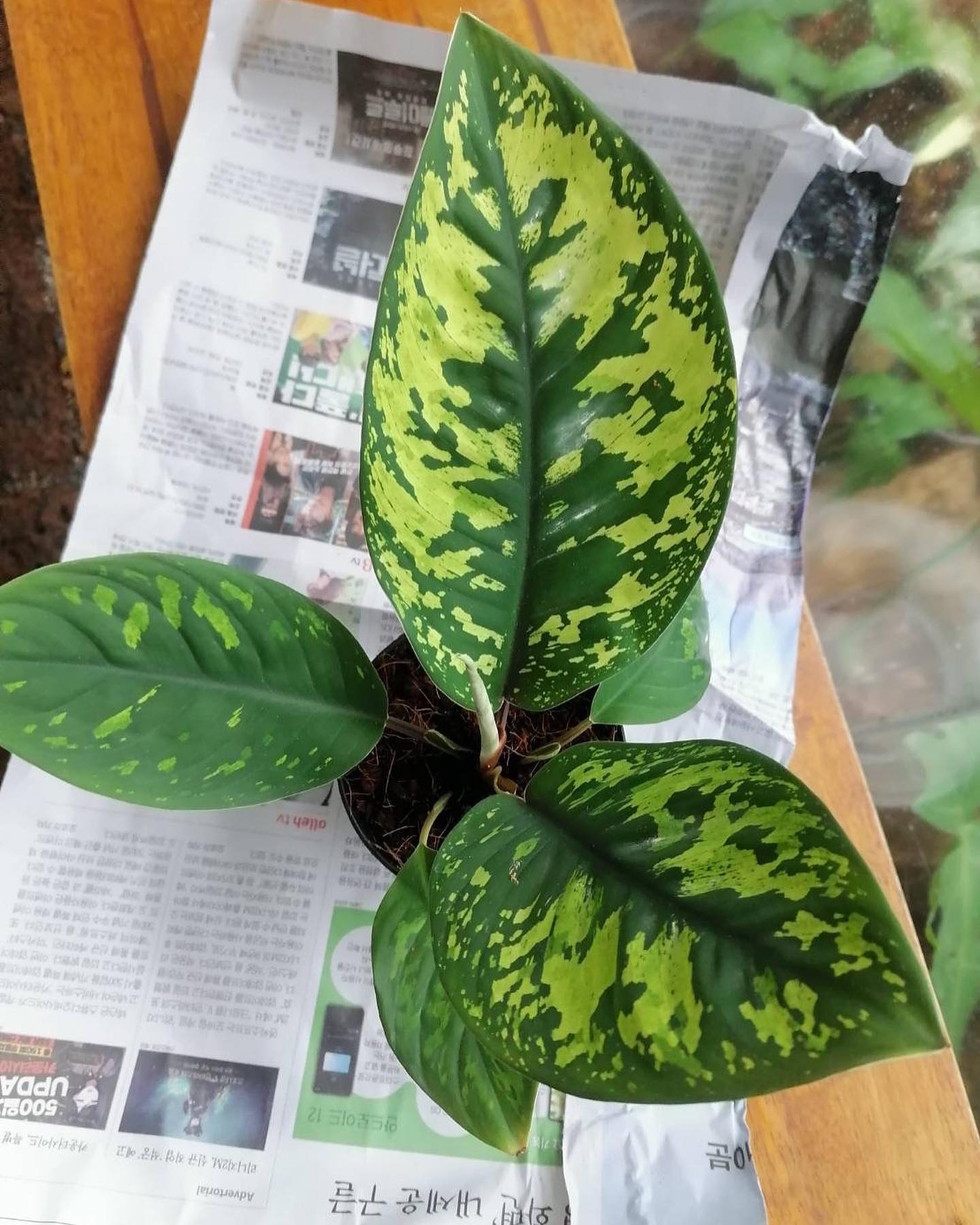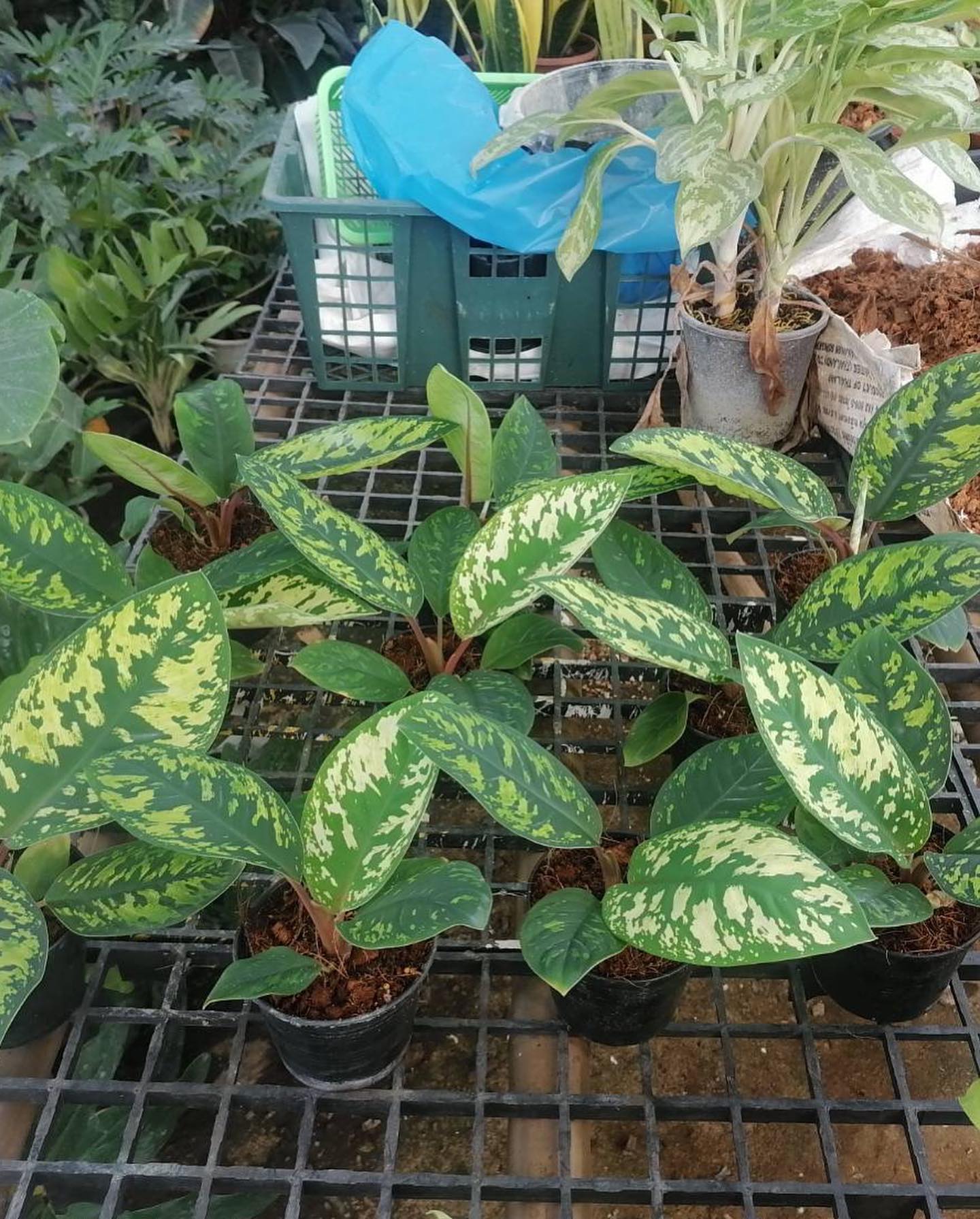The Homalomena Wallisii, also known as the Wallisii plant or Wallisii aroid, is a stunning tropical plant admired for its gorgeous foliage. With large, variegated leaves in a deep green and creamy white, this architectural aroid immediately draws the eye. Though beautiful, Wallisii plants require particular care and conditions to remain healthy and thrive indoors.
Through trial and error with my own Wallisii plant, I’ve discovered several “secrets” to success that have helped my plant flourish. In this blog post, I’ll share 5 keys to thriving Homalomena Wallisii plants, from proper soil to ideal light levels and more. Follow these Wallisii plant care tips and you’ll have a showstopper specimen in no time!

Provide the Right Potting Mix
Homalomena Wallisii plants need a well-draining, moisture-retentive soil to prevent rotting and allow adequate air circulation to the roots. The soil should also have some weight and body to anchor the top-heavy Wallisii plant.
A Custom Aroid Mix Works Best
I highly recommend making a custom aroid potting mix for Homalomena Wallisii plants. This allows you to cater the soil perfectly to the Wallisii’s preferences.
My mix contains 2 parts peat or coco coir for moisture retention, 2 parts perlite for drainage and aeration, 1 part bark or charcoal fines to allow air flow, and 1 part worm castings or compost for nutrition. I simply combine these ingredients until fully blended. This soil allows excess moisture to drain easily while still retaining some moisture between waterings.
Orchid Mixes Can Also Work
If mixing your own soil seems complicated, an orchid potting mix can also work well for Wallisii plants. Look for a mix containing fir bark, perlite, charcoal and sphagnum moss. I recommend adding extra perlite for enhanced drainage. Orchid mixes provide lots of air space while still holding some water. They may dry out faster than an aroid mix, so monitor soil moisture closely.
“For more insights on soil requirements and composition ideal for Homalomena, check out our comprehensive guide on ‘Caring for an Homalomena – 5 Important Things to Keep in Mind‘.”
Provide High Humidity Levels
As tropical rainforest plants, Homalomena Wallisii requires very high humidity to thrive. Ideal levels are 60-80%, significantly higher than most indoor environments. Low humidity causes crispy leaf edges and stunted new growth.
Luckily, boosting humidity around a Wallisii plant is simple! I recommend grouping Wallisii plants tightly together to take advantage of their natural transpiration. Creating a humidity tray by placing pebbles and water under the pots also works well. However, my favorite humidity boosting trick is using an electric warm or cool mist humidifier nearby the plants. This easily elevates the ambient humidity to Wallisii-approved levels. Just be sure to use distilled or filtered water to prevent mineral deposits.
“Discover various ways to maintain ideal humidity for your Homalomena in our detailed article, ‘5 Benefits Of Growing Homalomena Indoors‘.”

Elevate your space with the exquisite beauty of Homalomena Wallisii.
Ready to make this botanical gem yours? Click ‘Add to Cart‘ now and bring a touch of natural luxury into your life!”
Provide Bright, Indirect Light
Homalomena Wallisii enjoys bright, indirect light similar to most rainforest aroids. Too little light leads to limp, faded foliage, while too much direct sun scorches the leaves.
I recommend placing Wallisii plants near an east or west facing window where they’ll receive gentle morning/afternoon sun. If keeping the plants further from a window, consider supplementing with a grow light. LED full spectrum grow lights work wonderfully. Place the plants where they’ll receive 12-14 hours of bright, indirect illumination for best growth. Insufficient light will result in weak, stunted plants.
East or West Facing Windows
Positioning Homalomena Wallisii plants near east or west facing windows provides gently filtered light all day as the sun tracks across the sky. Just be sure to diffuse harsh afternoon light with a sheer curtain. These moderate light levels really strike a perfect balance for Wallisii plants.
Bright Indirect Light from North Facing Windows
North facing windows receive no direct sun, making them inherently bright but gentle. This can also be an excellent spot for Wallisii plants. Shelves around 6 feet from north windows provide suitable illumination in most cases.

Water Thoroughly When Soil is Partially Dry
Homalomena Wallisii prefers an evenly moist but not soggy soil environment. Water too sparingly, and the soil will dry out excessively between waterings. Overwater, and you risk oxygen-suffocating the roots leading to stem and root rot. Striking the right balance takes some attentiveness.
I recommend watering Homalomena Wallisii plants once the top inch or two of soil has dried out. Check by inserting your finger into the soil and feeling for moisture. If the top portion feels dry, it’s time to water. When watering Wallisii plants, pour water slowly and evenly over the entire soil surface until it drains freely from the holes at bottom. Then, dump out any excess water in the saucer. This ensures thorough, even saturation without waterlogged soil.
For most indoor environments, I find myself watering smaller Wallisii plants every 7-10 days and larger specimens every 10-14 days. The humidity, light and temperature of your space will impact specific watering needs. Get to know the weight and look of your properly watered Wallisii plants. Then use these cues to determine when another drink is required.
“For a deeper understanding of the watering needs of Homalomena, explore our article ‘Unlocking the Secret to Thriving Homalomena: Watering Tips‘.”
Maintain Warm Temperatures Year Round
As tropical plants, Homalomena Wallisii thrives in warm, steamy conditions reminiscent of its native Southeast Asian rainforests. Temperatures of 65°F-85°F suit the Wallisii plant best. Cooler or dramatic temperature fluctuations can shock the plant’s system. This leads to yellowing, drooping, leaf loss and stunted development.
I strongly recommend keeping Homalomena Wallisii plants above 65°F year round. Moving plants away from cold drafts and heating your home sufficiently during winter is key. You can further buffer Wallisii plants by placing them on heat mats or nearby radiators. Just don’t allow temperatures to rise above 85°F. These simple adjustments make a world of difference in the health and growth rate of Homalomena Wallisii plants.
“Get detailed insights into temperature and humidity requirements for Homalomena in ‘Homalomena Temperature and Humidity: 101 Guide‘.”
Conclusion
With their showstopping variegated foliage, Homalomena Wallisii makes a fabulous addition to both home and office spaces. However, providing this tropical aroid’s particular preferences is essential to your success. Use an aroid potting mix for exceptional drainage and moisture retention. Keep the humidity high and soil consistently moist but not soaked. Bright indirect light enables the foliage to shine while temperatures of 65°-85°F prevent shocking the plant. Follow these secrets to success, and your Homalomena Wallisii will flourish beautifully!
FAQ
- What is a Homalomena Wallisii plant?
- A: A Homalomena Wallisii plant is a tropical houseplant known for its attractive foliage. It belongs to the Araceae family and is characterized by its striking, arrow-shaped leaves with beautiful green and silver variegation.
- How do I care for a Homalomena Wallisii plant?
- A: To care for a Homalomena Wallisii plant, place it in bright, indirect light, and keep the soil consistently moist but not waterlogged. Maintain a warm and humid environment, and fertilize it sparingly during the growing season. Prune yellow or damaged leaves as needed.
- What are the common issues and pests that affect Homalomena Wallisii plants?
- A: Common issues include overwatering, which can lead to root rot, and inadequate humidity, which may cause browning leaf edges. Pests like spider mites and mealybugs can infest these plants. Regularly inspect your plant for signs of these problems and take appropriate measures to address them.
- Can I propagate my Homalomena Wallisii plant?
- A: Yes, you can propagate Homalomena Wallisii plants through division or by taking stem cuttings. Division is typically the easier method, as it involves separating mature plants into smaller sections, each with roots. Stem cuttings can also be rooted in water or soil to create new plants.
- How big does a Homalomena Wallisii plant grow, and is it safe for pets?
- A: Homalomena Wallisii plants typically grow to a height of around 1 to 2 feet (30 to 60 cm). While these plants are not considered toxic to pets, it’s best to keep them out of reach, as some animals might nibble on the leaves, which could cause mild digestive upset. Always monitor your pets’ interactions with your plants.

